From a survey of Simone Leigh to a series by Jacob Lawrence, here are ten global exhibitions that highlight the work of Black creators
February marks Black History Month in the United States and Canada, dedicated to recognizing important figures and events in the history of the African diaspora. The United Kingdom and Ireland observe Black History Month in October. These month-long observances are intended as annual culminations of ongoing efforts to share and elevate Black history and culture.
The following exhibitions offer opportunities to celebrate the works of Black artists and their contributions to the art historical canon throughout the year and across the globe. From Rotterdam to Los Angeles, immersive experiences and groundbreaking retrospectives, here are 10 must-see exhibitions of Black creators in 2023.
Through painting, prints, sculpture, performance and more, Cameroonian artist Barthélémy Toguo addresses questions of displacement and belonging. During a recent residency at the Museu Picasso de Barcelona, Toguo created a body of work in direct dialogue with Picasso. The resulting exhibition Barthélémy Toguo represents the first time the museum has mounted an exhibition of this scale dedicated to a living contemporary artist.
Though from disparate times and places, Toguo and Picasso share commonalities, particularly the use of art as political expression. Through works created in situ at the museum, Toguo examines Picasso’s oeuvre with large-scale murals, ceramics, installations and paintings. Among them is the work Rwanda 1994, conceived with Guernica (1937) in mind, as well as a reinterpretation of Velázquez’s Las Meninas (1656), a painting that also fascinated Picasso. Taken together, the exhibition demonstrates the through-lines that exist between artists across the ages, and the human experiences that connect us all.
Showcasing works by 11 contemporary artists from the African diaspora, In The Black Fantastic offers an immersive experience at the intersection of reality and fantasy. In The Black Fantastic, says the show’s curator Ekow Eshun, presents ‘works of speculative fiction that draw from history and myth to conjure new visions of African diasporic cultural and identity’.
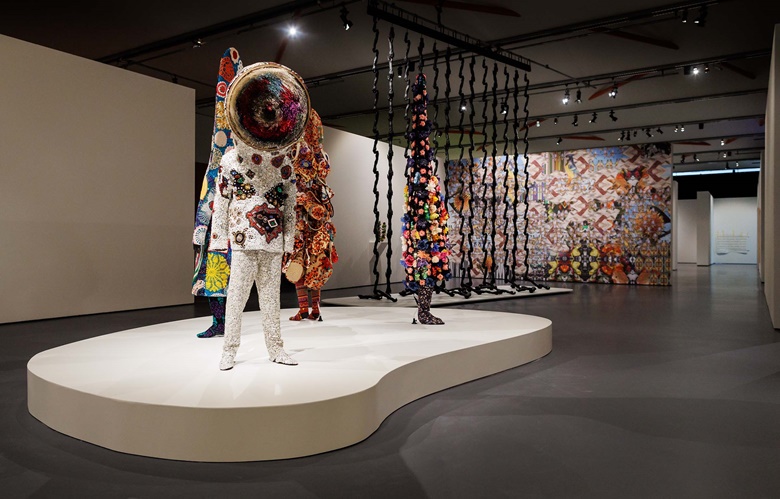
In The Black Fantastic, Kunsthall Rotterdam. Photo by Fred Ernst
All 11 artists engage with science fiction, folklore, myth and spiritual traditions to build disparate worlds and narratives. Through painting, photography, video, sculpture and installation, the show addresses issues of racism and inequality, whereby fantasy becomes an exploration of future possibility. Though each artist is presented solo in a distinct space, the exhibition unfolds seamlessly, tied together by its innovative exploration of the Black experience.
Painted in the mid-1940s by American artist William Henry Johnson, the Fighters for Freedom series was a tribute to the accomplishments of Black visionaries. Through these richly rendered paintings, Johnson celebrated the accomplishments of each individual while also underscoring the racism and prejudice working against them. His ‘fighters’ were both revered historical figures like Harriet Tubman and George Washington Carver as well as those forgotten by history. By depicting their stories through his paintings, Johnson paid tribute to the many individuals who have fought for justice and equality.
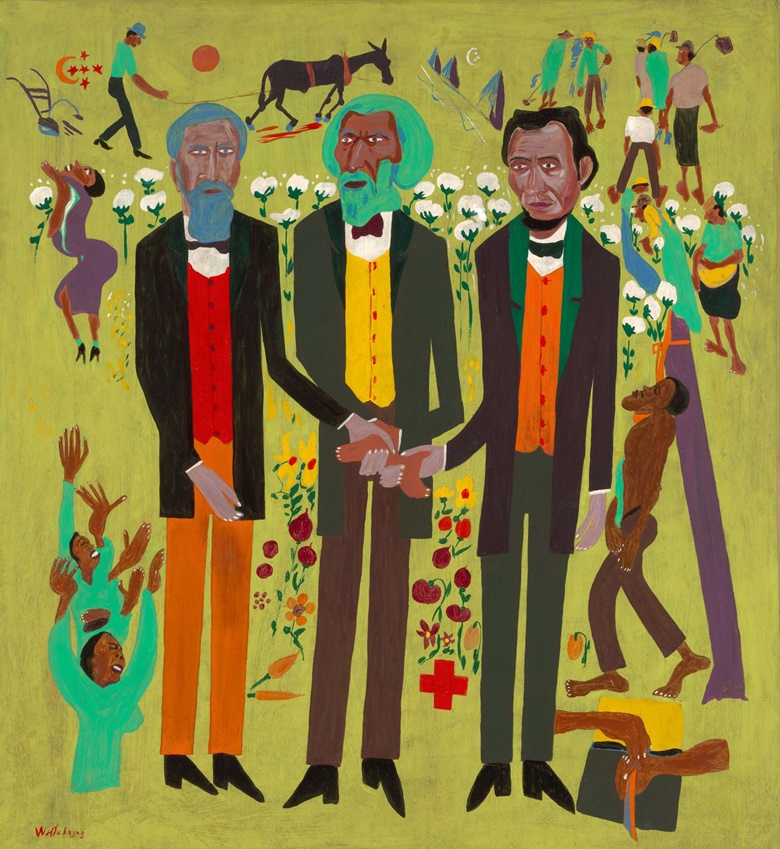
William H. Johnson, Three Great Abolitionists: A. Lincoln, F. Douglass, J. Brown, ca. 1945, oil on paperboard, Smithsonian American Art Museum, Gift of the Harmon Foundation, 1983.95.5
The exhibition, organised by the Smithsonian American Art Museum, draws on a collection of more than 1,000 works gifted to the museum in 1967. Through the depth and breadth of Johnson’s work, we are reminded of the ongoing fight for equality and the importance of individual perseverance.
The exhibition will travel from Oklahoma City to the Rockwell Museum in Corning, NY where it will be on display from 2 June – 5 September 2023.
American painter Jacob Lawrence is revered for his dynamic paintings of the African American experience. Though largely influenced by moments in American history such as the Great Migration, Lawrence also drew inspiration from other sources.
During a 1962 visit to Nigeria, Lawrence met artists affiliated with the legendary Mbari Artists and Writers Club. The Club was a diverse group of creatives who explored and critiqued Western art traditions, publishing their work in the journal Black Orpheus. Lawrence’s Nigerian contemporaries made a profound impact, and he returned to the country in 1964 for a nine-month stay. During the visit, he finalised more than 25 paintings for a series entitled Nigeria, where he explored themes of spirituality and community.
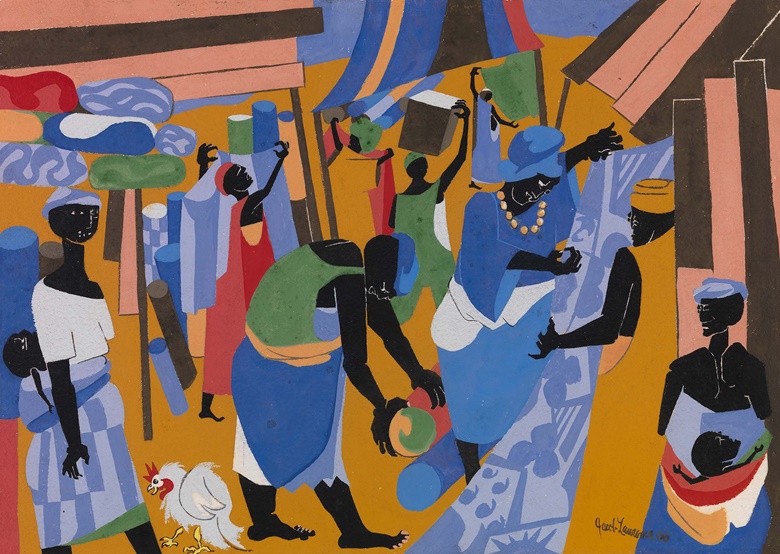
Jacob Lawrence (American, 1917–2000), Market Scene, 1966. Gouache on paper. Chrysler Museum of Art, Museum purchase 2018.22. © 2022 The Jacob and Gwendolyn Knight Lawrence Foundation, Seattle / Artists Rights Society (ARS), New York
After returning to the United States, Nigeria was presented at the gallery of Lawrence’s dealer in 1965. The upcoming museum exhibition Black Orpheus: Jacob Lawrence and the Mbari Club marks the first time the series will be shown in nearly 60 years. Bringing together over 125 objects, archival images, videos and letters, the exhibition is an in-depth look at an oft-overlooked aspect of Lawrence’s career, and the international artists who inspired him.
From New Orleans, the exhibition will travel to the Toledo Museum of Art where it will be on display from 3 June – 3 September 2023.
Born and raised in Nigeria and now based in Los Angeles, Njideka Akunyili Crosby is known for her layered, collage-based paintings that explore transnational identities and the African diasporic experience. Using paint, textiles, images from magazines and family photographs, Akunyili Crosby creates a complex tapestry of cultural references.
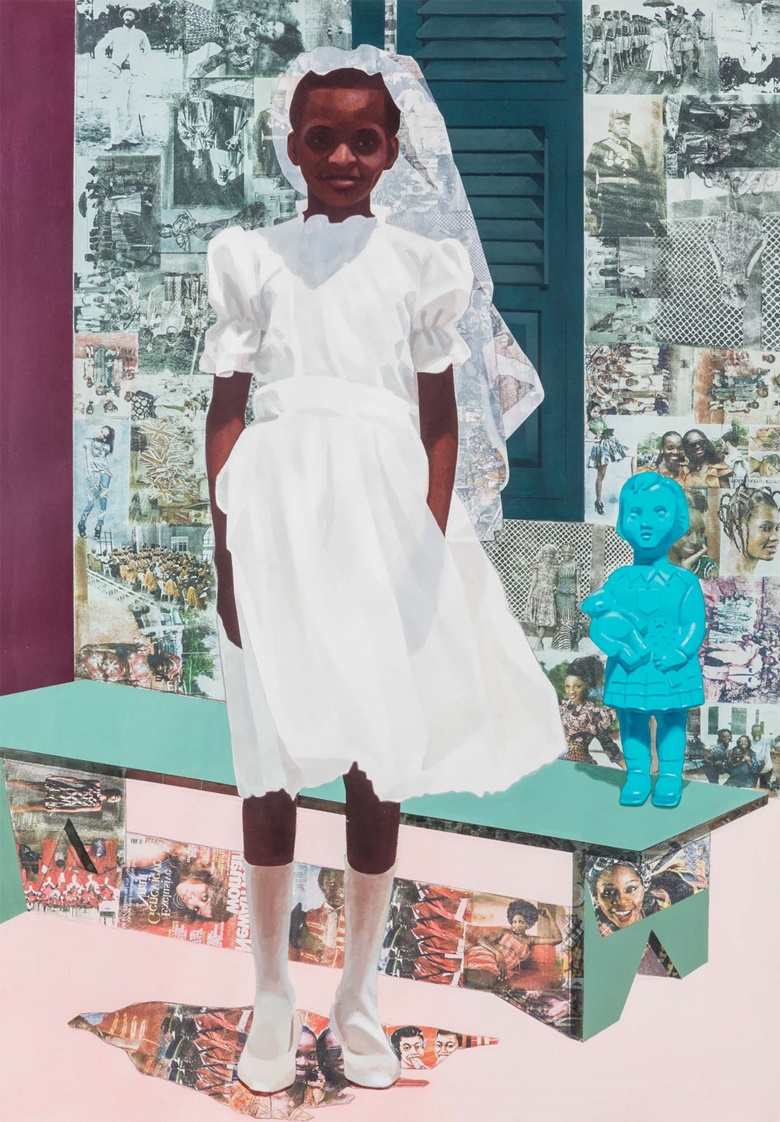
Njideka Akunyili Crosby, “The Beautyful Ones” Series #4, Private collection, Image © Njideka Akunyili Crosby, courtesy of the artist, Victoria Miro, and David Zwirner
In the third and final exhibition of a series curated by the Pulitzer Prize-winning author and New Yorker magazine critic Hilton Als in collaboration with the Yale Center for British Art, selections from Akunyili Crosby’s series The Beautyful Ones take center stage. Inspired by Ayi Kwei Armah’s 1968 novel The Beautyful Ones Are Not Yet Born, the series comprises portraits of Nigerian children.
In each painting, Crosby creates a contained world in which her subjects exist. While certain elements of these scenes — like the retro décor and electronics — evoke the 1980s era of the artist’s childhood, they are also timeless settings imbued with a sense of fantasy. Through the intimate gaze of the artist and the richly layered imagery, the portraits are a meditation on everyday life and cross-cultural dialogue.
The Great Migration refers to a period between 1910 and 1970 that saw one of the largest demographic shifts in United States history. Facing racial segregation and discrimination in the post-Reconstruction era, an estimated six million Black Americans fled the rural South for cities in the Northeast, Midwest and West.
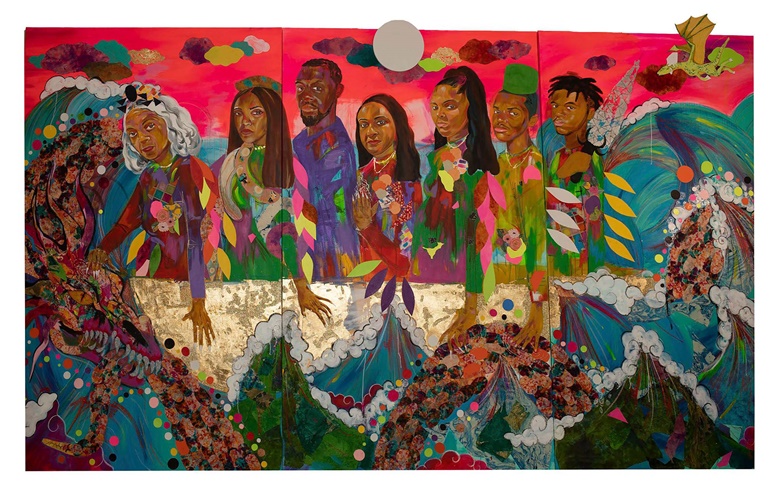
Jamea Richmond-Edwards (born Detroit, Michigan, 1982; based in Detroit, Michigan),This Water Runs Deep, 2022. Mixed media on canvas with sound: 2 min., 18 sec., 96 in. × 15 ft. (243.8 × 457.2 cm). Courtesy of the artist and Kravets Wehby Gallery
A Movement in Every Direction: Legacies of the Great Migration at the Brooklyn Museum has brought together 12 contemporary Black artists to reconceptualise the narrative of the Great Migration. Working across genres from film and tapestry to painting, these artists consider the continued impact of this period on the country’s social and cultural fabric.
In many ways, the exhibition is an expansion of the existing narrative. In these artists’ hands, migration becomes a means of self-determination and perseverance. Crucially, the exhibition also gives voice to those often overlooked within this historic frame: the people who stayed behind.
Drawing its title from a book by Langston Hughes, Souls Grown Deep Like the Rivers celebrates the unique visual culture of Black artists from the American South. Using what materials were at-hand, including driftwood, roots and soil, these artists created their own visual sensibilities that both respond to and express the cruelties of American history.
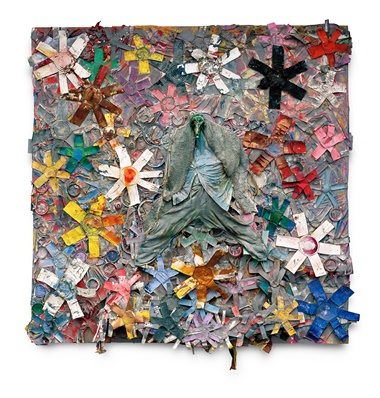
Left: Thornton Dial, Stars of Everything, 2004. Mixed media, 248.9 x 257.8 x 52.1 cm. Souls Grown Deep Foundation, Atlanta. © 2022 Estate of Thornton Dial / Artists Rights Society (ARS), New York / DACS, London 2022. Photo: Stephen Pitkin/Pitkin Studio
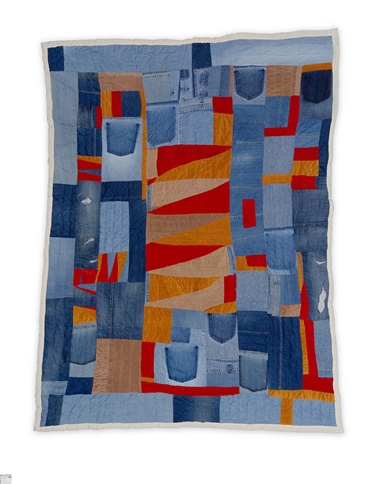
Right: Marlene Bennett Jones, Triangles, 2021. Denim, corduroy, and cotton, 205.7 x 157.5 cm. Souls Grown Deep Foundation, Atlanta. © 2023 Marlene Bennett Jones / Artists Rights Society (ARS), New York / DACS, London. Photo: Stephen Pitkin/Pitkin Studio
The exhibition will bring together nearly 70 works by 34 artists from the mid-20th century to today, including the celebrated quiltmakers of Gee’s Bend, Alabama. Incorporating sculpture, paintings, reliefs, drawings and quilts, Souls Grown Deep Like the Rivers highlights the exceptional ingenuity of these creators, many of whom will be seen for the first time in the United Kingdom.
- 8
6 April-4 September 2023
Institute of Contemporary Art, Boston
Known for exploring ideas surrounding race, femininity and material culture, contemporary artist Simone Leigh situates the Black female experience at the centre of her discourse. Spanning about 20 years of Leigh’s artistic practice, Simone Leigh — the first-ever comprehensive survey of the artist’s career — highlights the diverse range of her oeuvre, incorporating ceramic and bronze works as well as videos and installations.
The exhibition will also include the body of work that Leigh created for the U.S. Pavilion at the 59th International Art Exhibition of La Biennale di Venezia in 2022. The first Black woman to represent the United States at La Biennale, Leigh was awarded the Golden Lion for Best Participant of the exhibition.
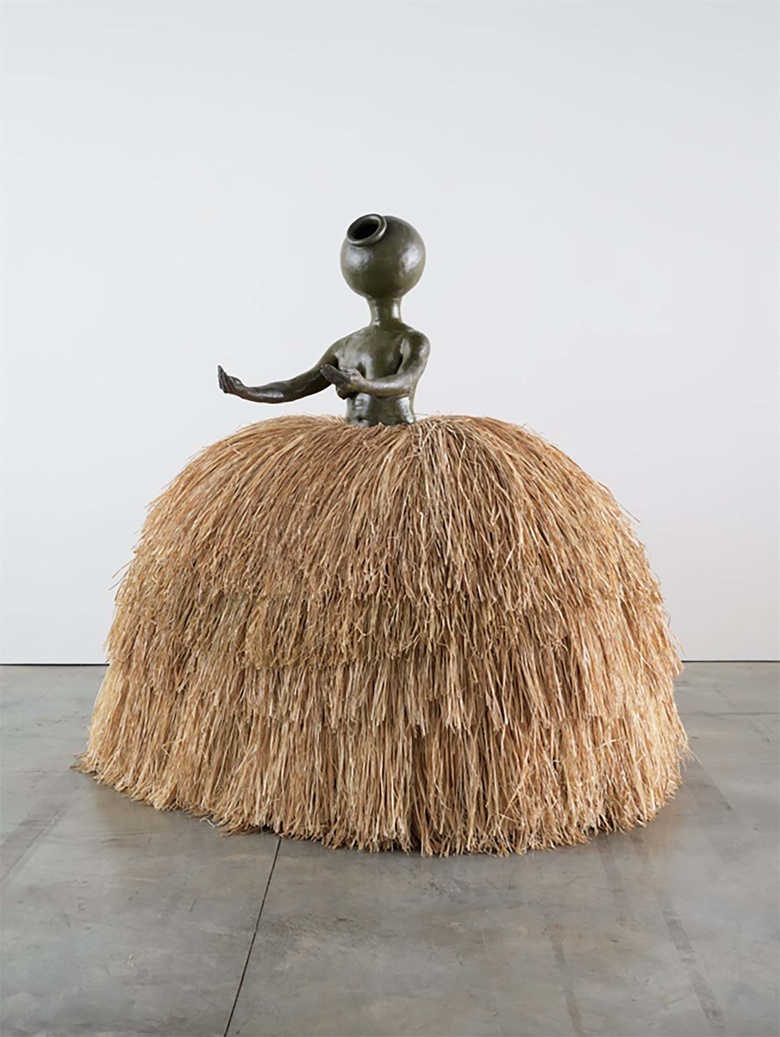
Simone Leigh, Cupboard IX, 2019. Stoneware, steel, and raffia, 78 x 60 x 80 inches (198.1 x 152.4 x 203.2 cm). Acquired through the generosity of Bridgitt and Bruce Evans and Fotene Demoulas and Tom Coté. Courtesy of the artist. © Simone Leigh
From Boston, the exhibition will travel to the Hirshhorn Museum and Sculpture Garden in Washington, D.C. and be part of a joint presentation at the Los Angeles County Museum of Art and the California African American Museum in Los Angeles.
The first retrospective in the United Kingdom to present Sir Isaac Julien’s pioneering work, Isaac Julien: What Freedom Is to Me showcases the art and activism of one of today’s leading video artists. Spanning four decades of Julien’s career, the exhibition traces the evolution of his creative voice, from early experimental works to the now iconic multi-screen installations.
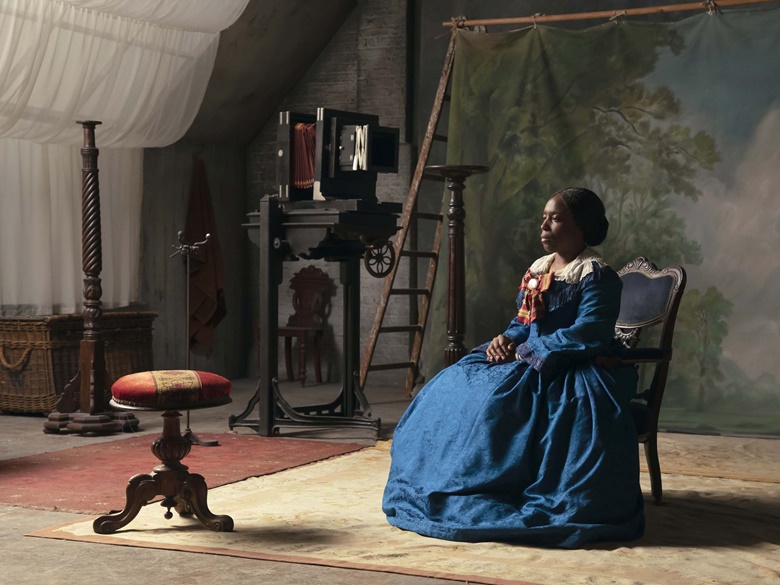
Isaac Julien, The Lady of the Lake (Lessons of the Hour), 2019. Framed photograph on gloss inkjet paper mounted on aluminium. 160 x 213.3 cm (63 x 84 in). Edition of 6 plus 1 artist’s proof © Isaac Julien. Courtesy the artist and Victoria Miro
Early films like Who Killed Colin Roach? (1983), a response to police violence, demonstrate Julien’s impassioned political activism, while the recent Once Again…(Statues Never Die) (2022) illustrates his powerful storytelling abilities. Overall, the breadth of the exhibition underscores Julien’s versatility as an artist and his ongoing commitment to political and cultural activism.
Throughout her long career, Carrie Mae Weems has been probing into the collectively assumed truths behind dominant historical narratives. Using a range of mediums, she considers alternative storylines, often positioning those neglected or marginalised by history at the forefront.
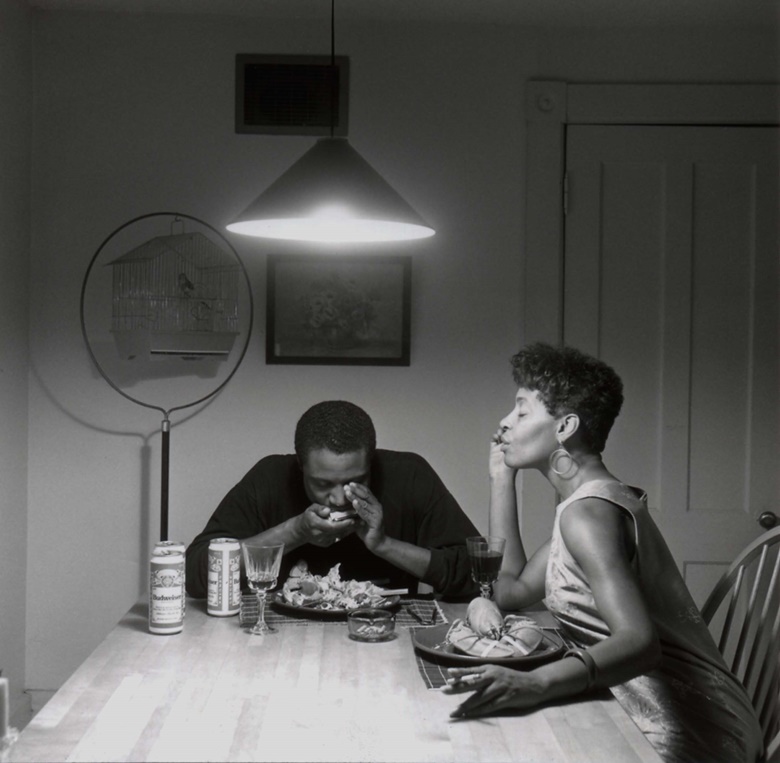
© bei der Künstlerin / the artist. Jack Shainman Gallery, New York
Featuring photography, videos and installations, Carrie Mae Weems: Evidence of Things Not Seen examines the complexities of Weems’ work across more than three decades. The title, taken from the book by James Baldwin, also references the artist’s interest in exploring history’s blind spots. Large in scale and scope, the exhibition offers profound and nuanced insights into Weems’ celebrated body of work.
Sign up today
Christie’s Online Magazine delivers our best features, videos, and auction news to your inbox every week
Subscribe
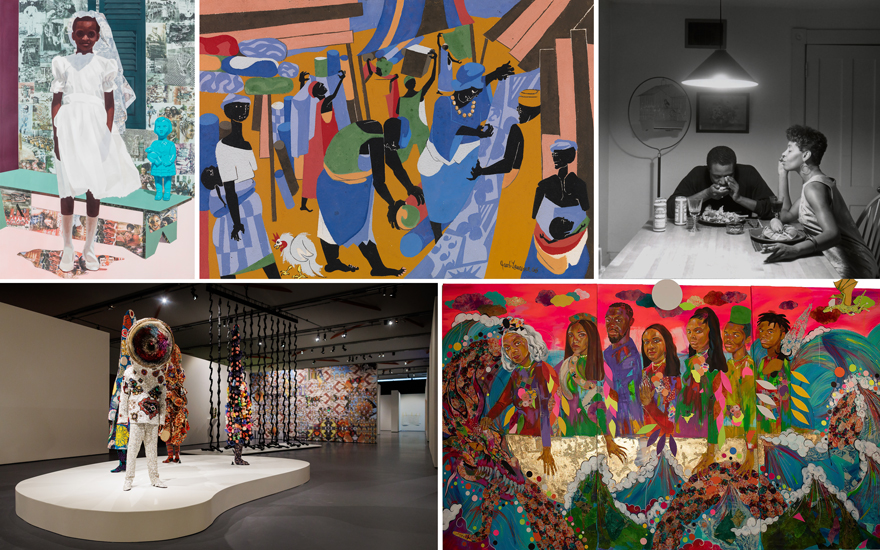



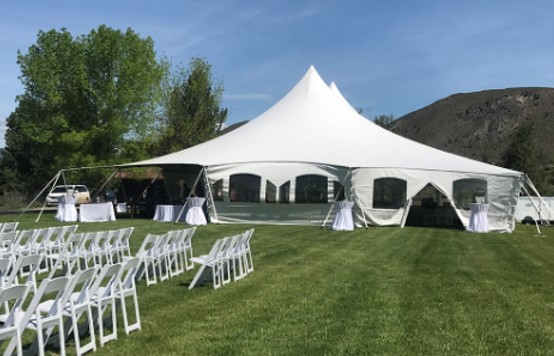
More Stories
Special Tour “Painting History” Showcases Two Exhibitions at The Hood: “Historical Imaginary” and “Kent Monkman: The Great Mystery”
The Ambassadors by Hans Holbein the Younger | History Of The Painting
14 Groundbreaking African American Artists That Shaped History